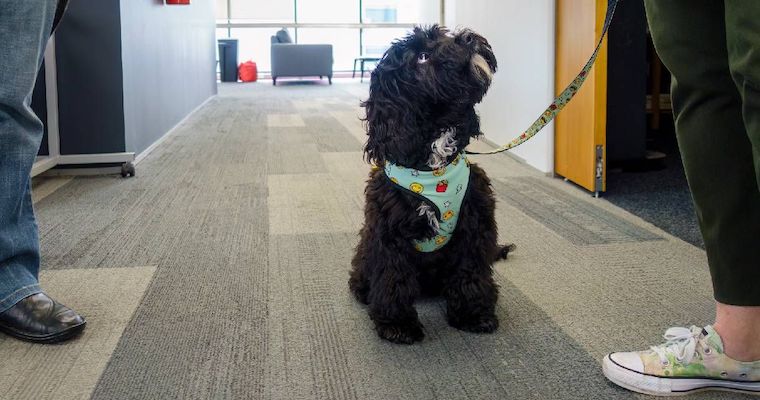Changing Expectations at Work

EDITOR'S NOTE: This article is part of Navigating Change, a Next Avenue initiative made possible by the Richard M. Schulze Family Foundationand EIX.
Younger workers are entitled prima donnas who expect a fully stocked snack bar, yoga, and chair massages at the office — for their pets, too!
Older workers are rigid technophobes who get judgey if you miss a deadline or mention your period in a meeting. Also: What's wrong with getting a bar cart for happy hours?
A lot of ink has been spilled about the generation gap at work, which has been playing out in tense exchanges over Slack and some pretty funny memes on social media, similar to the sentiments above.
But while the friction between older and younger workers seems clear, it's hard to tell what's actually going on. Are Gen Y and Gen Z really dismantling time-honored work standards in favor of cry rooms and unlimited vacay? Do boomer and Gen X managers need to get over their old-school biases and stick-in-the-mud rules?
Let's dig in.
How We Got Here
First, let's acknowledge that the work world has changed dramatically — whether you look back three years or 30. You could point to rapid technological advances or Covid setbacks, but the origins of the new (and not always comfortable) dynamic between generations actually stems from a profound change in workforce demographics, says Bradley Schurman, founder and CEO of Human Change, a consulting firm that helps organizations navigate demographic trends.
Namely: As boomers and Gen Xers get older and retire, there aren't enough younger workers to replace them. You've heard about the tight labor market. This is part of it.
"Businesses woke up to the post-Covid world and realized that they were experiencing serious labor shortfalls, especially among workers in the 16 to 64 (age) bracket," Schurman says.
The result: "Businesses are almost falling over themselves, trying to figure out what younger people want in the workplace," says Schurman.
Why Job Culture Is Changing
There's always been (and maybe always will be) a bias toward attracting younger workers, notes Schurman, whose 2022 book "Super Age: Decoding Our Demographic Destiny" examines aging's impact on society and culture. "They're cheaper, for one thing."
But today's much-tighter labor market has created a kind of hyper focus on digital natives, often at the expense of older workers' well-being, Schurman says. "Businesses are missing an opportunity to keep workers upskilled, to keep them engaged, to give them that feeling of purpose and loyalty."
To put it another way: "Millennials and Gen Z have what could be considered an upper hand," says Rue Dooley, an HR knowledge advisor with the Society for Human Resource Managers (SHRM).
And when one group has the upper hand, that often drives a change in values within an organization, which naturally causes tension. In today's workplaces, younger employees are introducing new attitudes, behaviors — and expectations — that some older managers find, well, baffling.
"It wasn't so long ago that you took what you were given, kept your head down and your nose to the grindstone," Dooley notes. "That's gone forever. And that may be a good thing."
Kids These Days!
Millennials and some Gen Z-ers came of age at a time when kids' needs took precedence. Bullying was bad, accommodations for everything from allergies to ADHD were simply expected. But Dooley points out that if younger employees are more assertive in expressing themselves, prior generations have to look in the mirror on that one. "We're the ones who taught them to stand their ground, to speak up for what they want," Dooley says.
In that light, it makes sense that many younger employees expect a certain fluidity at work and aren't as comfortable with traditional hierarchical structures. Sometimes older managers read this as disrespect.
Call it the rise of the job-casual era. While many boomer and Gen X workers remember a time when there was a firm line between your life at work and your life outside of work, those lines have been redrawn. "If it's out there, it's in here," could be today's office mantra, with the result that the formalities that governed so many organizations for so long are increasingly a thing of the past.
And that's not all bad.
Necessary Changes
For those who can remember what work was like 30 years ago, let's be honest. It was fraught with problems. Being able to identify sexual harassment at work was still a new thing — and not popular with the guys in charge. Your boss was your boss, and you had little or no say about your job or your future. Mental health issues were essentially invisible when they weren't outright mocked or scorned. And that's just the tip of the iceberg.
In many ways, some of the changes that have emerged, and accelerated since the pandemic, were deeply necessary. Flexible work schedules help families cope with the demands of living, working, caregiving. Being able to address racial discrimination openly supports the lives and careers of people of color. Not last and definitely not least: We all have mental health issues. So. Yeah.
Sorting Myths from Reality
All that said, however, notions that there has been a related rise in "indulgent" office place perks has been exaggerated, says Ben Wigert, director of research and strategy, workplace management, at Gallup.
"The novel perks you read about (for example, pingpong tables and pets at work) are not as common, nor as important to employees as often suggested in mainstream media."
Gallup's research shows that what young people expect from their jobs is actually . . . quite similar to what older employees expect: career development, compensation, work-life balance and wellbeing. In fact, younger employees prioritize those factors even more than older workers — which, Wigert points out, is appropriate to their life stage. "Younger employees are trying to learn the ropes — they are trying to do meaningful work, feel valued and grow in their careers."
That's not to say there haven't been any changes on the benefits front. In the last five years, according to SHRM surveys, more companies now offer mental health benefits, eldercare assistance, pet insurance and telemedicine coverage.
But all three experts — Dooley, Schurman and Wigert — took a cautionary tone about the ultimate value of some, softer perks. Having access to an on-site gym, free meals and drinks, airline miles and the like ranks pretty low for most workers, Gallup's data shows.
3 Ways to Close the Generation Gap
Given the complex reality of work today and tensions among the generations, what steps can boomer and Gen X employees and managers take to support better relationships with their younger colleagues?
1. Accept that things have changed.
This is a tough swallow when you wish things hadn't changed, but it's key, says Rue Dooley of SHRM. It's a brave new workplace we're in, and there's no point in trying to champion the norms of the past (even if "the past" was only a few years ago). "We must adjust, and adjust our expectations," says Dooley.
- Do the right things (or at least a couple).
What does that acceptance look like?
- Peel your clinging fingers from the idea that the way things used to be is "the right way." Maybe it was, but it's not now.
- Be curious, rather than judgmental, about the gap between your own expectations for work and those of younger colleagues.
- Listen up. Because Millennials and Gen Z are more comfortable saying what they think, to their boss or anyone else, there's a lot to be gained by taking in their POV rather than rejecting it. And taking a page from that playbook by offering yours. On that note…
- Flex your conversation skills.
Context is everything, and when trying to bridge a great divide between yourself and someone much younger, remember how different their lives have been. "Gen Z's were the first generation essentially to be raised with a mobile phone," says Bradley Schurman of Human Change. "That means they communicate in a different way."
"Where older workers need to put in some effort is in learning where and how conversations take place now," he adds. Hint: It's not just text and email. You may need to explore some new technology. Or an app. "It behooves us to keep up with these changes," says Schurman.
If you're thinking: Hang on! Don't younger employees also need to step up, be flexible (and maybe more respectful) about the way things used to roll? That will have to be for the next article.

